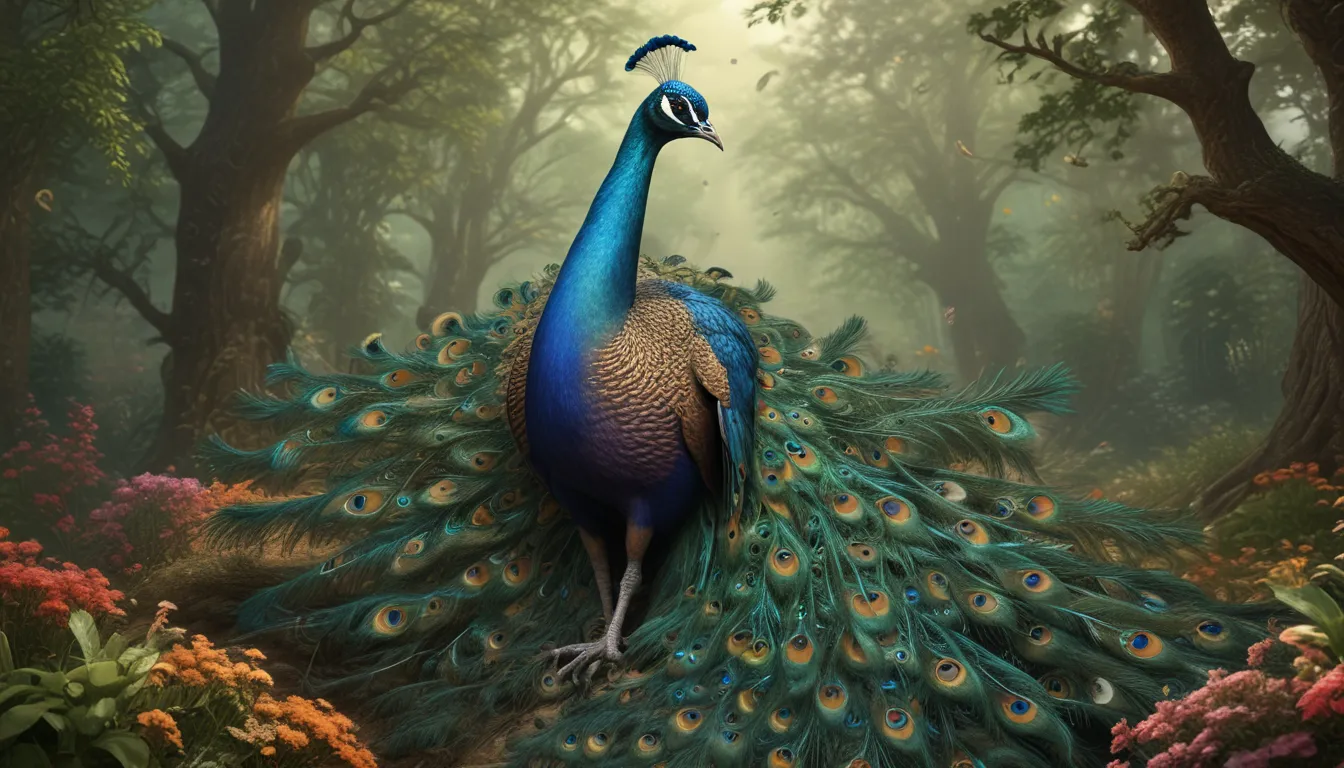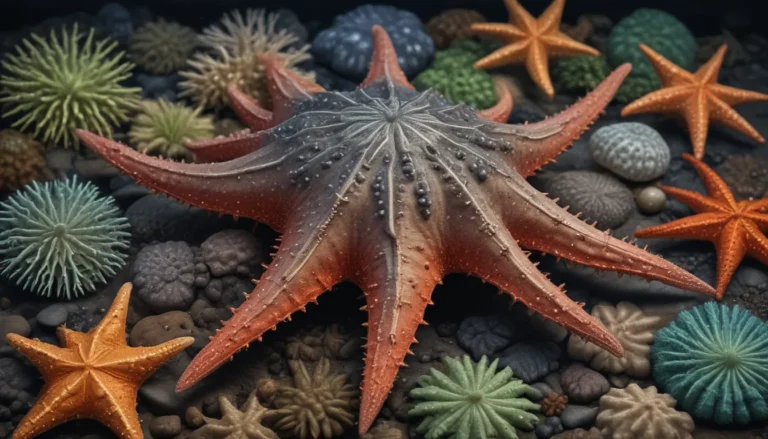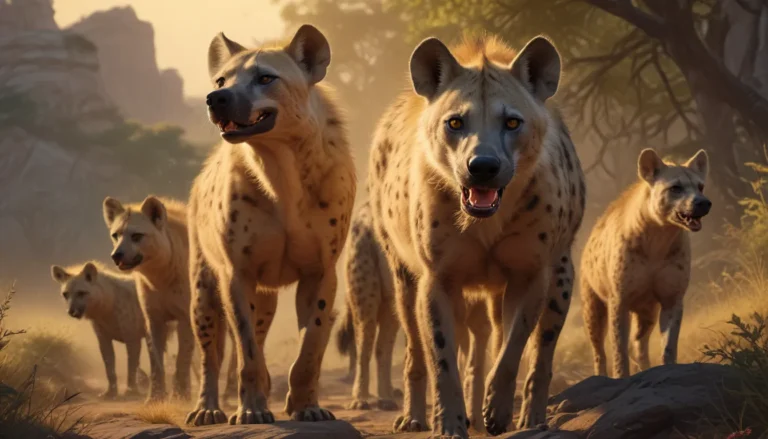The pictures we use in our articles might not show exactly what the words say. We choose these pictures to make you interested in reading more. The pictures work together with the words but don’t take their place. The words still tell you the important facts.
Are you enchanted by the stunning colors and elaborate displays of peacocks? Have you ever considered embarking on a journey into the world of peacock breeding? If so, get ready to explore the captivating process of peacock reproduction. Whether you are a hobbyist looking to expand your flock or a breeder aiming to produce high-quality offspring, understanding the intricacies of peacock breeding is essential. In this article, we will delve into 20 intriguing facts about peacock breeding, from courtship rituals and mating patterns to incubation periods and chick rearing. Join us on this colorful adventure as we uncover some surprising insights about these magnificent birds.
The Allure of Peacock Courtship Displays
- Male peacocks use their vibrant feathers and intricate displays to attract females during mating season.
- Female peahens carefully choose mates based on the quality and complexity of male peacocks' courtship displays.
During the mating season, male peacocks flaunt their vividly colored feathers, fan their tail feathers into elaborate displays, and make distinct vocalizations to attract females. The stunning and iridescent plumage of male peacocks plays a crucial role in attracting females during the breeding season. Female peahens observe the displays of male peacocks and select mates based on the quality and complexity of their courtship displays.
The Fascinating Mating System of Peacocks
- Peacocks establish a harem mating system where a male attracts several females to form a territory.
- Peacocks mate on the ground and can breed with multiple females in a single season.
Male peacocks establish a territory and attract several females to form a harem, mating with multiple females within their domain. Unlike some birds, peafowl mate on the ground rather than in trees or elevated locations. Male peacocks have the ability to mate with several females during the breeding season, increasing their chances of passing on their genes.
The Miracle of Peafowl Reproduction
- Peahens lay a clutch of 3 to 6 eggs in hidden nests on the ground.
- The peak breeding season for peacocks typically falls between February and July.
After mating, female peahens lay a clutch of eggs in hidden nests on the ground. The peak breeding season for peacocks usually occurs between February and July when the climate is favorable for reproduction. Peafowl eggs hatch after an incubation period of about 28 days, and peacock chicks are born precocial, capable of walking and feeding themselves shortly after hatching.
The Journey to Maturity and Longevity
- Peacocks reach sexual maturity at around three years of age.
- Peacocks can live up to 20 years in the wild.
Male peacocks typically reach sexual maturity at around three years old, while females reach maturity at around two years old. In their natural habitat, peacocks can live up to 20 years, granted they have no predators and access to sufficient resources.
The Adaptable Peafowl
- Peafowl can be found in a range of habitats, including forests, grasslands, and urban areas.
- Peacocks have a distinct call used for territorial and reproductive purposes.
Peafowl are adaptable birds and can thrive in various habitats, from forests to grasslands and even urban areas. Male peacocks have a loud and piercing call that they use to establish their territory and attract females.
The Annual Feather Renewal Process
- Peacocks molt and regrow their feathers annually to maintain their vibrant plumage.
Peacocks undergo a molting process where they shed their old feathers and regrow new ones, ensuring they maintain their stunning appearance year after year.
The Timeless Beauty of Peacocks
- Peacocks have been domesticated for centuries for their ornamental beauty.
- Peacocks are iconic symbols of beauty and opulence in cultures around the world.
Peacocks have been kept in captivity and domesticated for their ornamental beauty for many centuries. Due to their stunning appearance, peacocks have become iconic symbols of beauty, grace, and opulence in cultures worldwide.
Conclusion
Breeding peacocks is a fascinating process that requires a deep understanding of their unique behaviors and needs. From courtship displays to nesting habits, there are various factors to consider when embarking on a peacock breeding journey. By providing the right environment, diet, and care, you can experience the joy of witnessing these majestic birds reproduce and continue their legacy.
FAQs
- When is the breeding season for peacocks?
-
The breeding season typically starts in late winter or early spring.
-
How long does it take for peacocks to lay eggs?
-
Peahens usually start laying eggs two to three weeks after mating.
-
How many eggs do peacocks lay at a time?
-
Peahens typically lay 4 to 8 eggs in a clutch.
-
How long does it take for peacock eggs to hatch?
-
Peacock eggs take approximately 28 to 30 days to hatch.
-
How long before peacock chicks can fly?
-
Peacock chicks start attempting to fly at around 14 to 16 days old.
-
Can peacocks breed with other bird species?
-
Peacocks can only successfully breed with other peafowl species.
-
Do peacocks stay with the female after breeding?
-
Peafowl are not monogamous, so the male typically moves on to mate with other females.
-
How can I create a suitable breeding environment for peacocks?
-
Provide ample space, natural vegetation, and a secure nesting area for successful breeding.
-
Do peacocks display courtship behaviors during the breeding season?
-
Yes, male peacocks perform elaborate courtship displays during the breeding season.
-
Are there different color variations in peacocks?
- Yes, peacocks come in several color variations, including Indian blue, white, pied, and black-shouldered.
Whether you are a seasoned breeder or a novice enthusiast, the world of peacock breeding is filled with wonder and intrigue. Take the time to learn about these magnificent birds and their unique reproductive behaviors, and you'll be rewarded with a deeper appreciation for the beauty they bring to the world.






